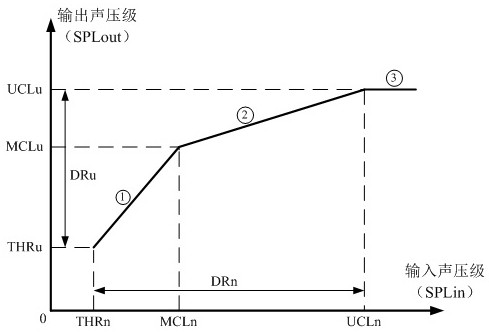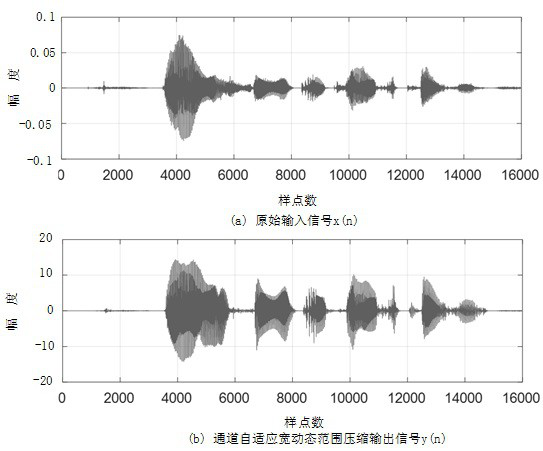A channel adaptive wide dynamic range compression method for digital hearing aids
A technology with a wide dynamic range and a compression method, which is applied to hearing aids, hearing aid signal processing, and adaptation of hearing aids for hearing loss. Loss and other issues to achieve the effect of reducing computational complexity and improving speech intelligibility
- Summary
- Abstract
- Description
- Claims
- Application Information
AI Technical Summary
Problems solved by technology
Method used
Image
Examples
Embodiment 1
[0062] This embodiment is a channel-adaptive digital hearing aid wide dynamic range compression method, which includes the following steps:
[0063] Step 1) Design an adaptive channel filter bank: select an asymmetric filter bank decomposition and synthesis algorithm by simulating the auditory characteristics of the human ear, and then design the number of filter bank channels and parameters according to the patient audiogram and the psychoacoustic model to obtain Personalized filter bank in line with the patient's hearing loss;
[0064] Step 2) sound signal compression output: use the digital hearing aid using the method described in step 1) to perform wide dynamic range compression on the input sound signal sub-channel, and the compression process includes the following steps:
[0065] Step 2-1), carry out adaptive channel filter bank decomposition to input signal, obtain the signal of adaptive channel;
[0066] Step 2-2), carry out loudness compensation to each channel sig...
Embodiment 2
[0113] Example 2 effect
[0114] This embodiment is to perform objective evaluation and subjective evaluation on the effect of the channel-adaptive digital hearing aid wide dynamic range compression method described in the first embodiment. The objective evaluation is to measure the amplitude and intelligibility of the compensated speech. The results are as follows: image 3 The subjective evaluation is to randomly select 10 senile hearing-impaired patients for the subjective test of speech recognition to obtain the speech recognition rate, and use the original sound as the recognition control. The results are shown in Table 1.
[0115] Table 1. Average Speech Recognition Rates for Hearing Impaired Patients
[0116]
[0117] image 3 It is shown that the wide dynamic range compression of the channel-adaptive digital hearing aid by the method of the present invention increases the speech amplitude after compensation, but still maintains the speech envelope, and the voicepr...
PUM
 Login to View More
Login to View More Abstract
Description
Claims
Application Information
 Login to View More
Login to View More - R&D
- Intellectual Property
- Life Sciences
- Materials
- Tech Scout
- Unparalleled Data Quality
- Higher Quality Content
- 60% Fewer Hallucinations
Browse by: Latest US Patents, China's latest patents, Technical Efficacy Thesaurus, Application Domain, Technology Topic, Popular Technical Reports.
© 2025 PatSnap. All rights reserved.Legal|Privacy policy|Modern Slavery Act Transparency Statement|Sitemap|About US| Contact US: help@patsnap.com



